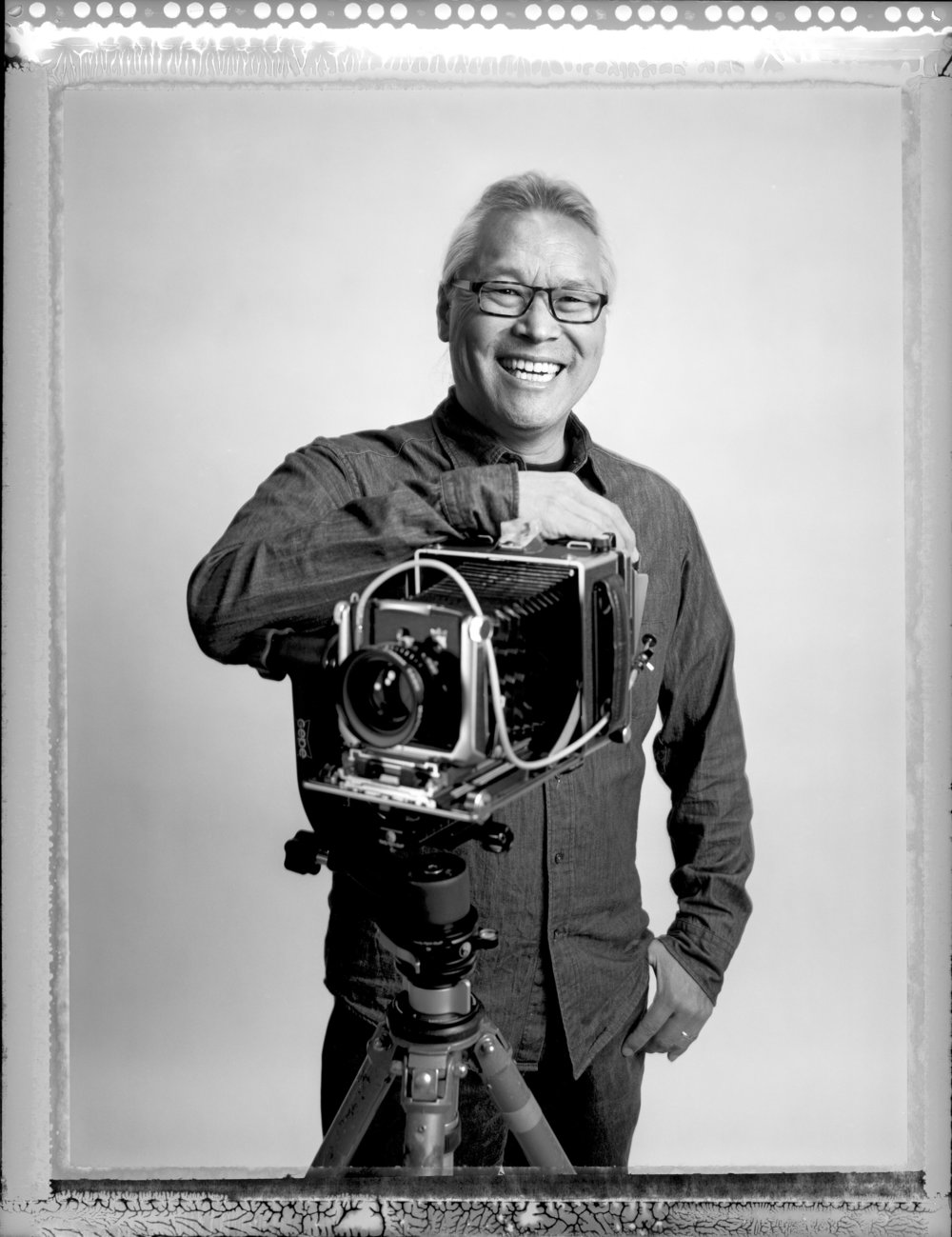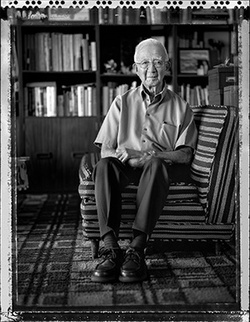“The faces from the photographs staring up at me as I searched for my family in the National Archives have always haunted me,” Paul Kitagaki Jr., recalls. “I wanted to know the story behind the faces and discover how they survived and created a new life after the war.”

The noted photographer and videographer—a Sansei whose work has been honored with dozens of awards, including the Pulitzer Prize—had family members who had been unjustly incarcerated in American concentration camps during World War II.
“I learned of Executive Order 9066 in my 10th grade history class in 1970,” Kitagaki says. “Then I discovered the book Executive Order 9066 with many Dorothea Lange photographs documenting the incarceration in 1972.” He found Lange’s work impressive and inspiring and he quickly became a fan.
Kitagaki’s uncle, Nobuo Kitagaki, was an accomplished artist who encouraged his nephew’s creative interests. “When I was a child he gave me art and photography books,” Kitagaki says. “But his biggest gift was when he learned of my passion of photography and told me that one of my heroes, Dorothea Lange, had photographed our family when they were forcibly removed to camp. I wanted to know what the photograph looked like and this led to my search for the images in the National Archives in Washington, D.C., in 1984. There are four photographs Lange took of our family in the National Archives.”
For Kitagaki, finding his family pictures, and seeing the faces of so many other innocent incarcerees, was a powerful moment that he never forgot. It resonated with him deeply as a Japanese American—and as a photographer.
“When I was young I didn’t know I would spend a lifetime learning photography,” Kitagaki says. “I thought I would become a musician. Like many young musicians who grew up in the San Francisco Bay Area in ’60s and ’70s, I was influenced by The Beatles, Rolling Stones, Cream, Led Zeppelin, Grateful Dead, Sly and the Family Stone, Miles Davis, and John Coltrane. I played drums in high school in various rock and jazz bands and started San Francisco State as music major.” But while Kitagaki enjoyed music, photography kept emerging as his calling.
“I can remember when I was a four-year-old taking photos with my parents’ Kodak Brownie at the children’s park in Golden Gate Park,” Kitagaki says. “It wasn’t until my last year in high school that I took a photography class with my girlfriend. Later in college I purchased a Nikon Nikkormat camera I took with me and read magazines and looked at photography books in the library. As I struggled with an injury from playing music, I took a few photography classes to expand my knowledge. I moved from the music department to the Broadcasting department. I graduated college with a major in Broadcasting, but I knew I wanted to pursue my passion in photography.”
“During my last semester in college I took a photojournalism class with San Francisco Examiner photojournalist Fran Ortiz that led to my career as a photojournalist,” Kitagaki says. “After graduating I started to freelance in the Bay Area and kept working at the department store where I had worked to pay for college. From there I was lucky to turn the freelance to a staff job at a newspaper and then kept moving to bigger newspapers across the West Coast.”
Since 2003, Kitagaki has had a long and successful tenure as a senior photographer for The Sacramento Bee and has expanded his scope to include video. Over his long career, his work has been published in major news outlets worldwide, such as National Geographic, Time, Smithsonian Magazine, Sports Illustrated, The Wall Street Journal, The New York Times, Los Angeles Times, and The Washington Post, and his work has also been nominated for Emmy Awards.
“During the course as a photojournalist at different newspapers I photographed stories on the aftermath of Executive Order 9066,” Kitagaki says. “They included pilgrimages to Tule Lake and one of the first stories of Frank Emi and the 63 resistors at the Heart Mountain Relocation Center with reporter Donna Kato at the San Jose Mercury News.” He recognized that documenting the stories of the camps was important and decided to make it a personal assignment. He aspired to find the surviving camp incarcerees photographed by Dorothea Lange, Ansel Adams, and others during World War II, and juxtapose their old photos with new ones that he would take in the present day.
Kitagaki’s friend and mentor, the late Pulitzer Prize-winning investigative journalist Andrew Schneider, “knew the importance” of Kitagaki’s family story and inspired him with his drive to right societal wrongs. “He would push and nag me to finish the project, before the subjects where gone. He always offered his kind help.”
“I started out going to different churches in the Sacramento area and asking also people I knew in the San Francisco and Sacramento communities to help identify people in the historical photos from Dorothea Lange and others,” Kitagaki says. “It was a slow process for the first few years. In 2012, on the 70th anniversary of the signing of Executive Order 9066, I had 16 pairs to share. We published stories in The Sacramento Bee and the San Francisco Chronicle.” This work led to a permanent exhibition at the San Bruno BART station, the site of the Tanforan Assembly Center, where commuters see the story every day.
Kitagaki later added 45 more pairs of photographs and stories and started to exhibit the collection—which became known as Gambatte! Legacy of an Enduring Spirit— nationally after a debut at the California Museum in Sacramento. The project has garnered positive media coverage across the U.S. and internationally.
“After people have seen the project they have contacted me with more possible subjects, and without their help I wouldn’t have this body of work,” Kitagaki says. “I learned the spirit most people had, no matter what terrible tragedies they faced, was shikata ga nai (‘it can’t be helped’). I also felt they all had the spirit of gambatte (‘don’t give up and do your best’).” He strives to honor the camp survivors’ resilience and strength through his photographic tributes.
“I believe in the power of the photograph lasting a lifetime,” Kitagaki says. “It is able to connect with people on an emotional level. You can look at it for as long as you want, study and interpret the image, no matter if it is presented electronically on a phone or computer, in a book, of hanging on a museum or gallery wall.”
“We all need to record the stories of our families who experienced Executive Order 9066 and share their experience with the future generations before they are gone,” he adds. “You can do that now by interviewing your parents or grandparents and share their stories. We all carry a tool in our hands every day, a mobile phone that can record a video or audio recording of your history.”
That history, Kitagaki notes, can have an effect in the present. “I’ve noticed that the viewers, young and old, and of different ethnicities, all seem to find a common humanity that we all relate to as people.”
* * * * *
Gambatte! Legacy of an Enduring Spirit
November 17, 2018 — April 28, 2019
Japanese American National Museum
Los Angeles, California
Gambatte! Legacy of an Enduring Spirit features modern and historical photographs documenting the stories of Japanese Americans who were forcibly incarcerated during World War II. Large-format contemporary photos taken by Pulitzer Prize-winning photojournalist Paul Kitagaki Jr. are displayed next to images shot 75 years ago by such noted photographers as Dorothea Lange, Ansel Adams, and others; each pairing features the same individuals or their direct descendants as the subject matter. Inspired by the Japanese concept of gambatte—to triumph over adversity—the exhibition chronicles the strength and legacy of a generation of Japanese Americans who persevered over unimaginable hardship.
For more information about the exhibition >>
© 2019 Darryl Mori






